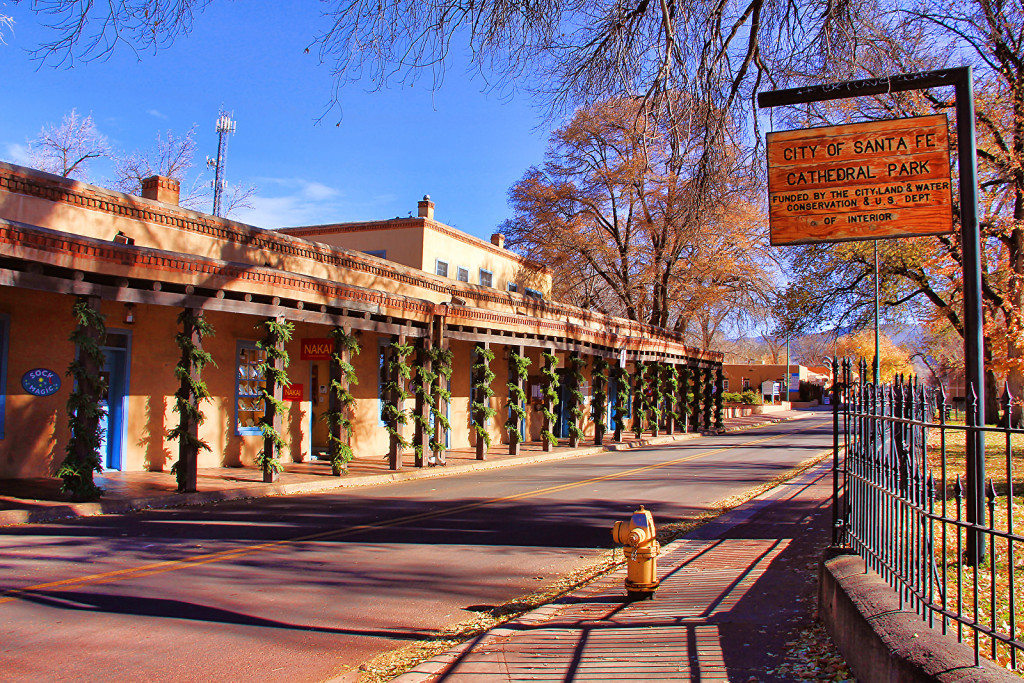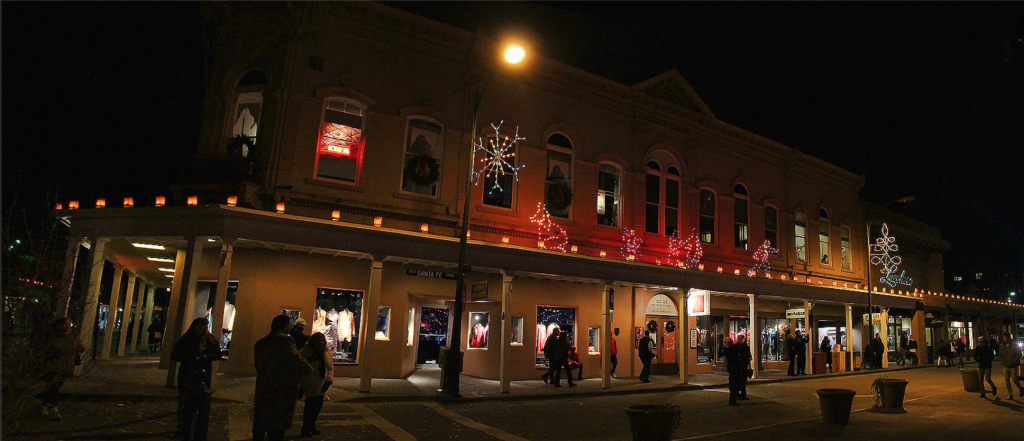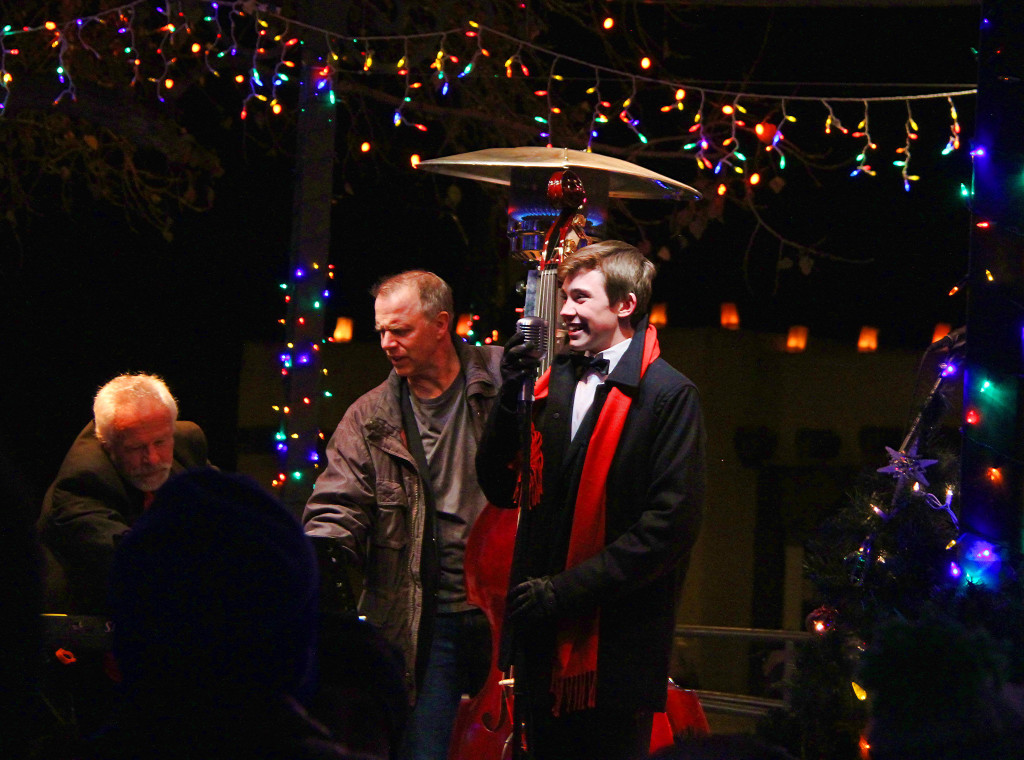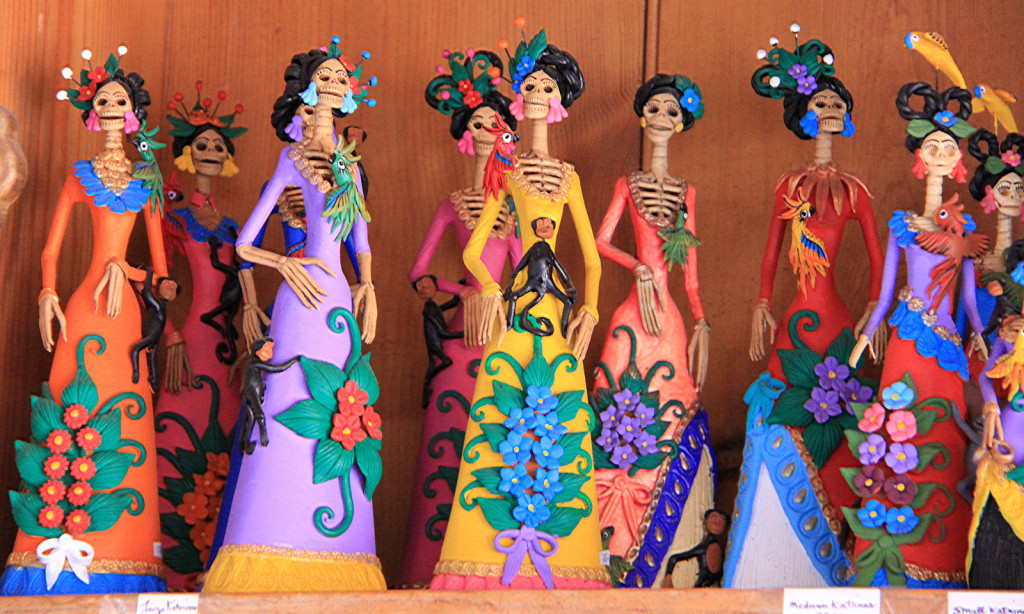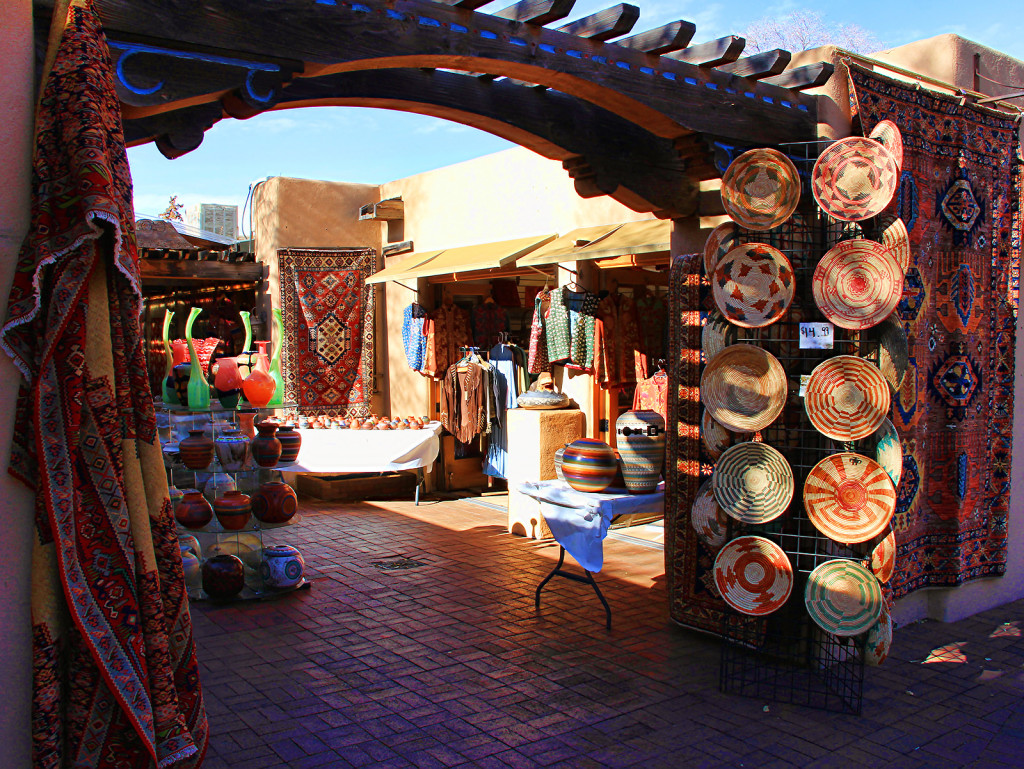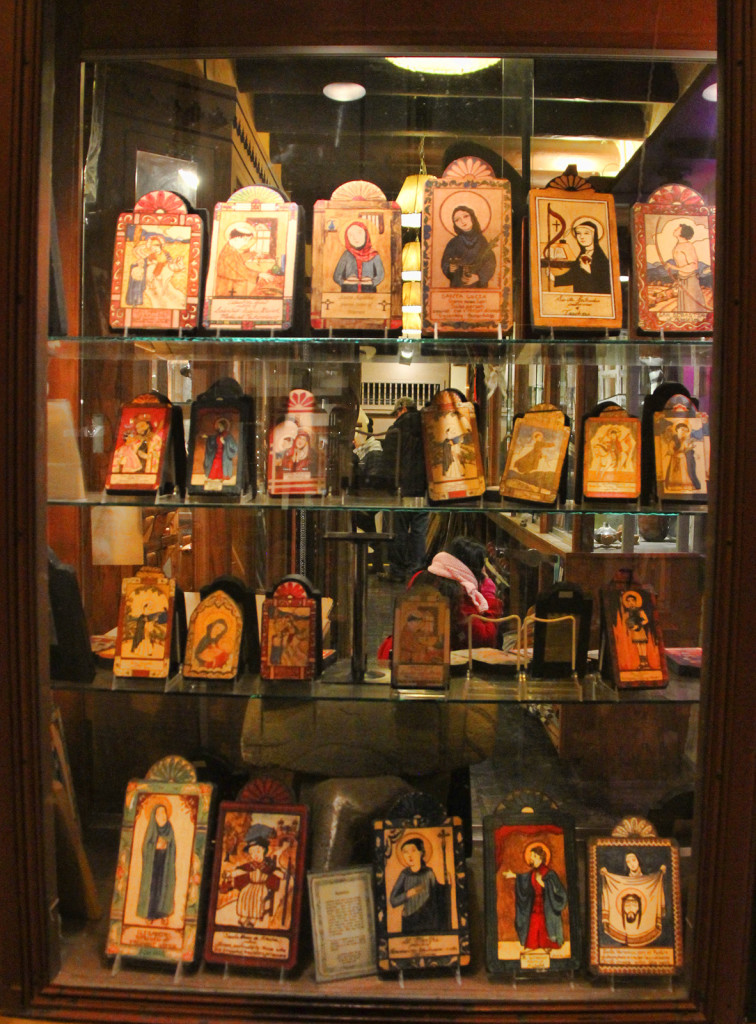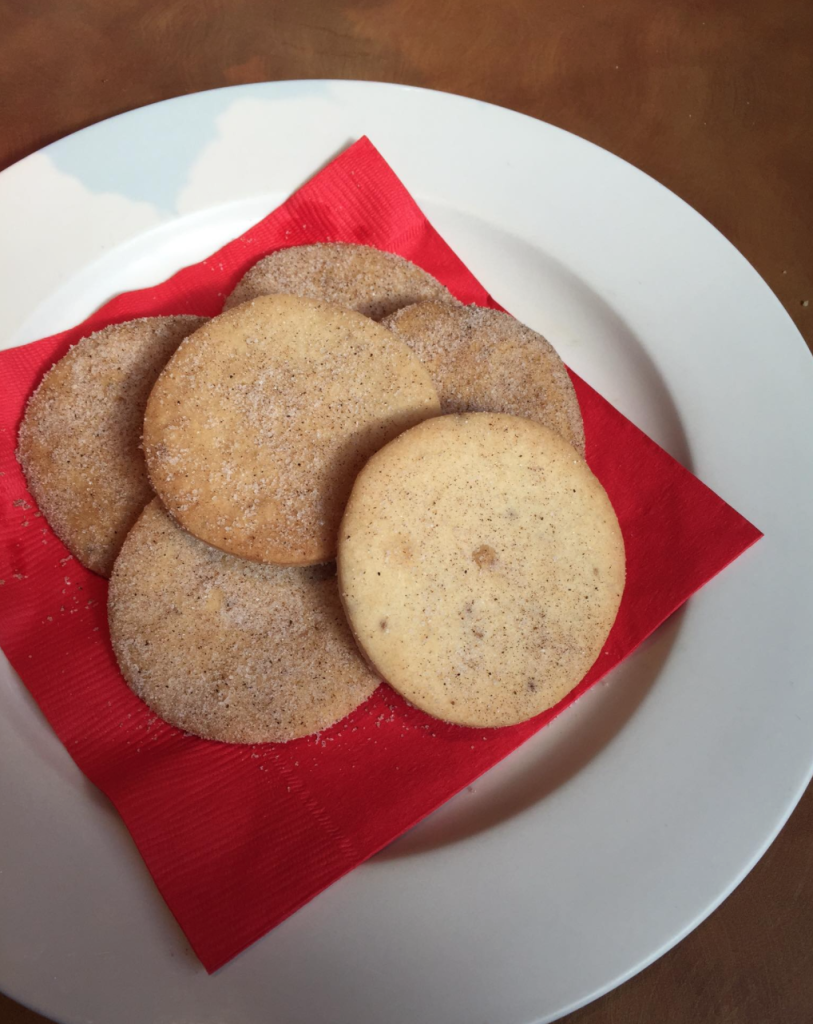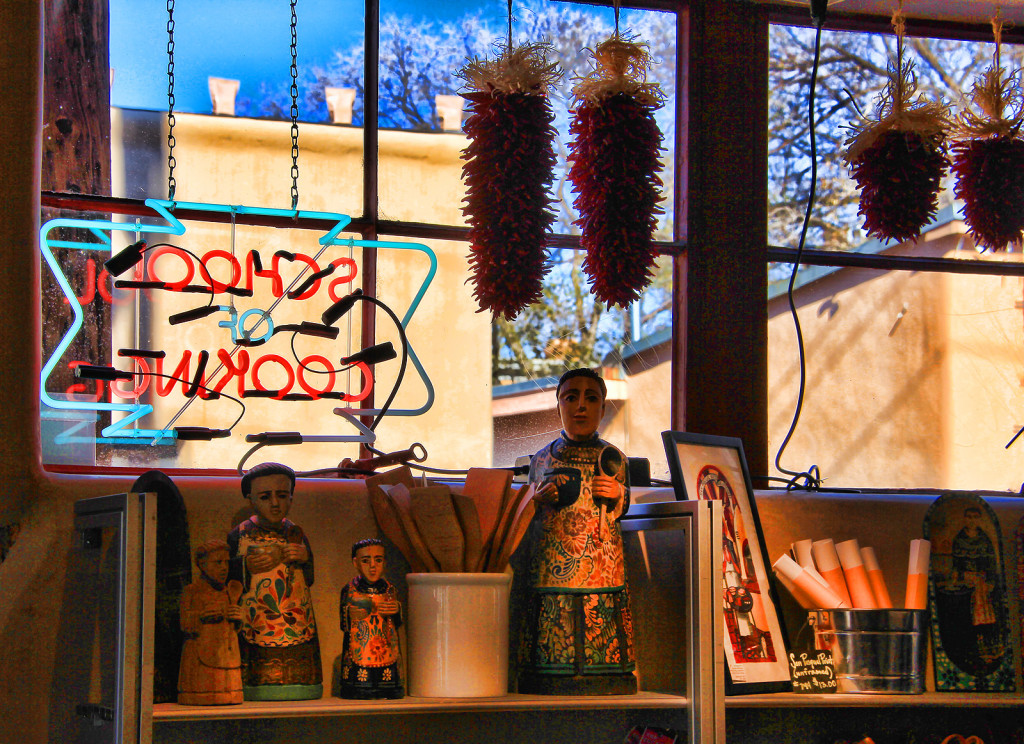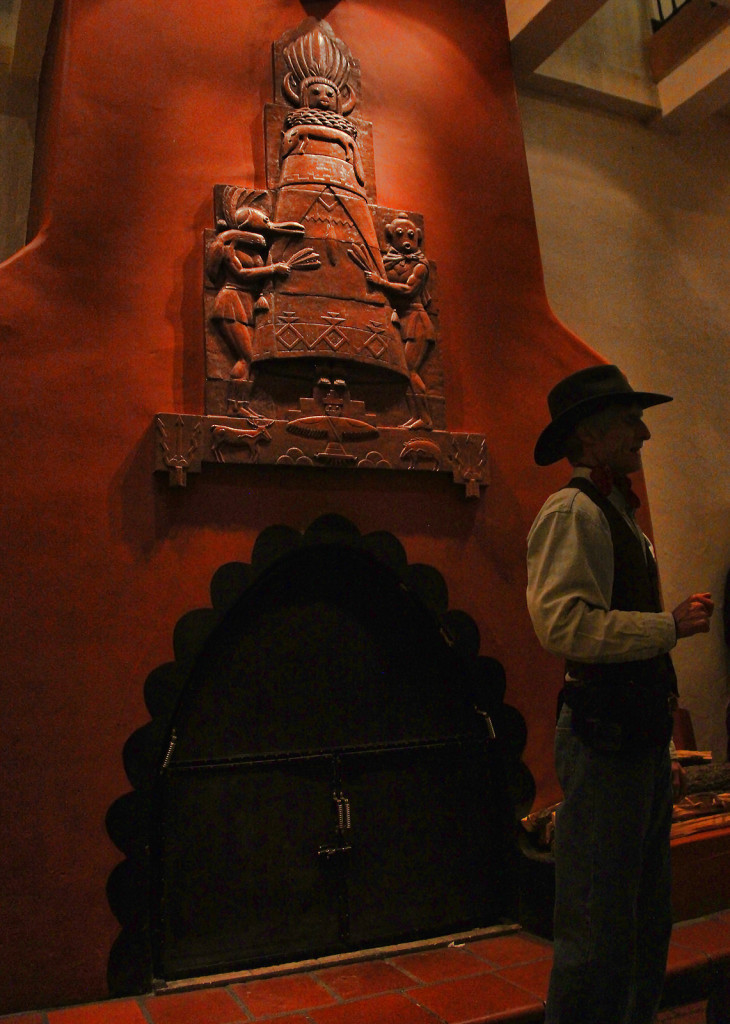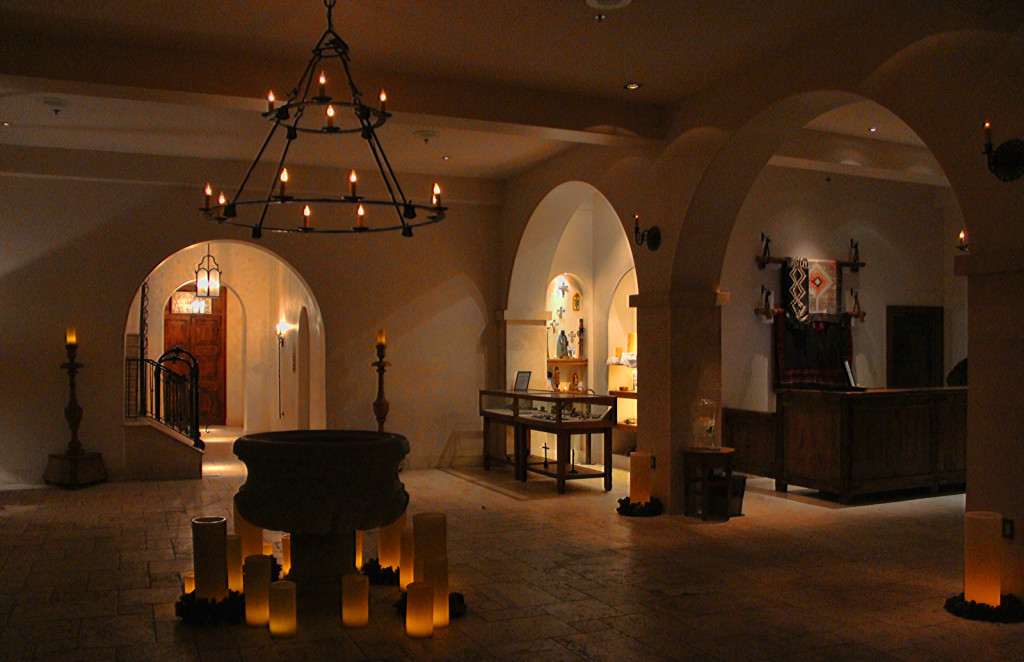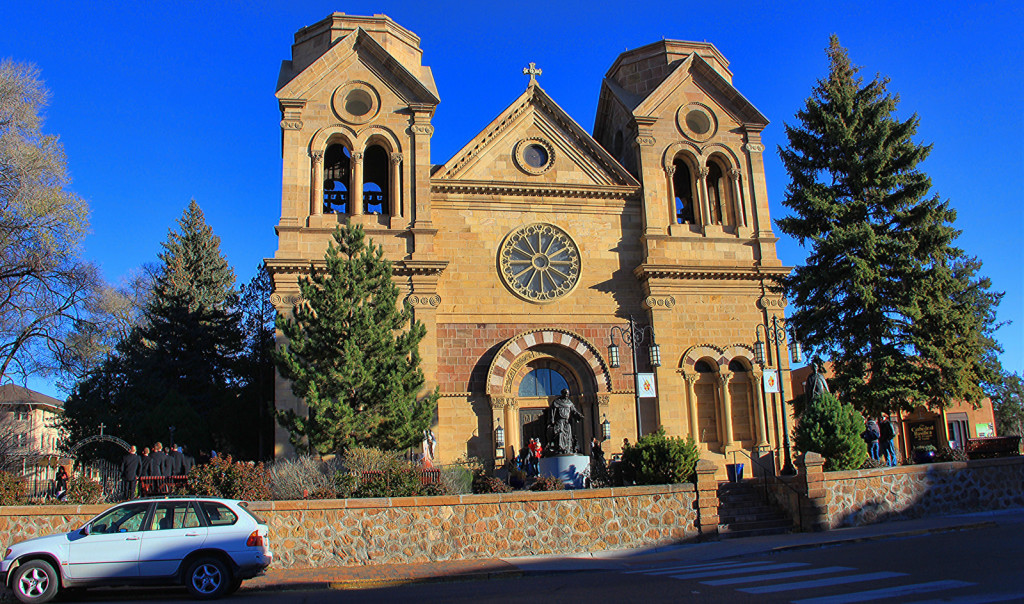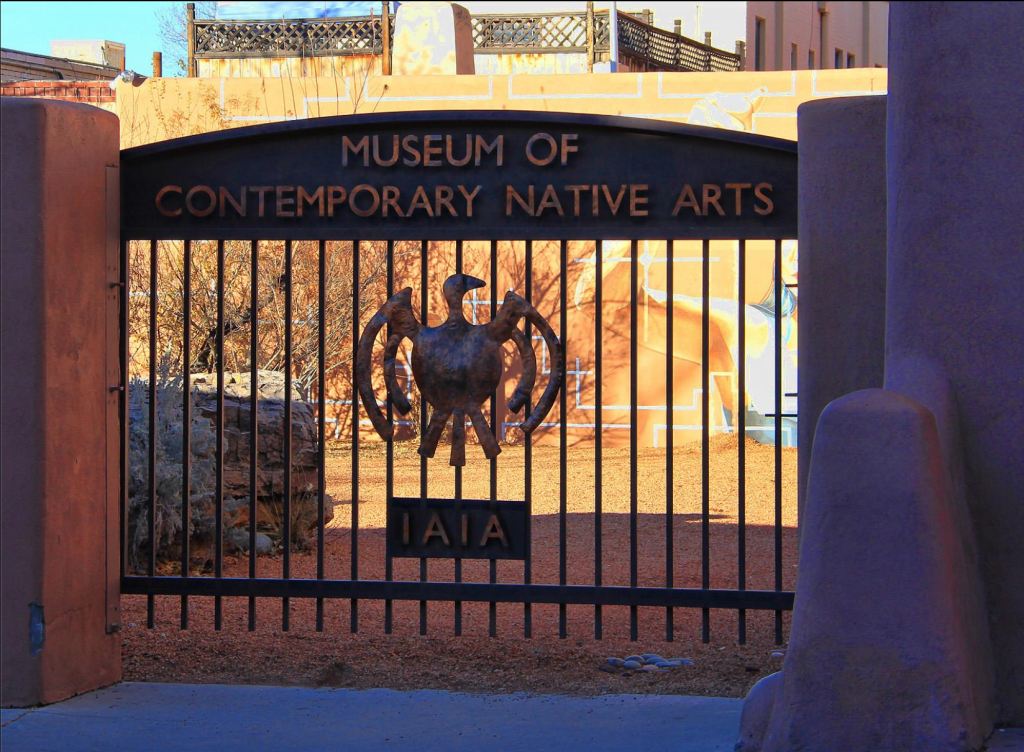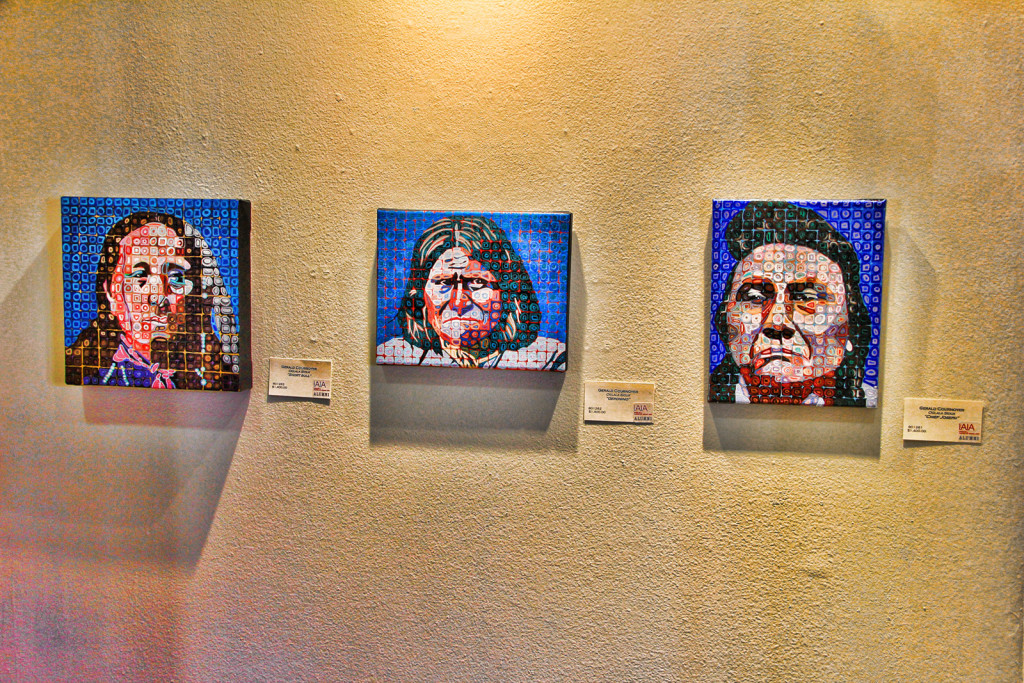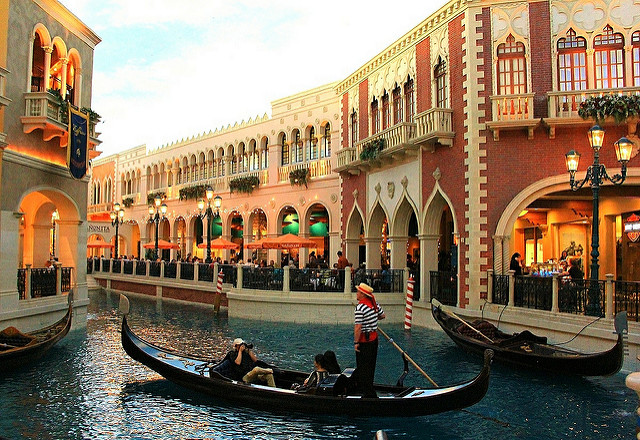
Christmas in Sante Fe
When considering destinations to visit during the holidays, the Southwest may not immediately come to mind. However, Sante Fe has a unique holiday charm in its historic buildings, colorfully lit square and thousands of farolitos topping its adobe structures. From the annual tree lighting on the square, to its yearly La Posada procession, to its Christmas Eve walk on Canyon Road, Sante Fe never disappoints. Snow capped mountains, pillars wrapped in holiday greenery and Mexican hot chocolate await in “the City Different.”
 Annual Tree Lighting on the Plaza, Sante Fe Plaza, NM – Taken by Diann Corbett, 11/2015.
Annual Tree Lighting on the Plaza, Sante Fe Plaza, NM – Taken by Diann Corbett, 11/2015.
Annual Christmas Tree Lighting on the Plaza
This celebration happens on Friday during Thanksgiving weekend. There is music, holiday lights and thousands of farolitos – candles set in sand-weighted paper bag lanterns. Farolitos are called Luminarias in other areas of New Mexico. They are original to New Mexico, and are based on Chinese lanterns.

Looking Toward High Desert at 7,000 Ft & Mountains in Sante Fe from La Fonda Hotel, NM – taken by Diann Corbett, 11/2015.
New Mexico Chiles
No matter what time of year you arrive in Sante Fe, you will be asked: Red or Green? This question refers to how you like your chile peppers. Chile peppers are a quasi-religion in New Mexico. Their Hatch peppers are so different, they are spelled chile instead of chili. Hatch peppers are bred from a mixture of poblano and jalapeño peppers. They only come from the town of Hatch, in southern NM. The green are fresh or pickled versions and the red are dried with a smokey flavor. Some people like one or the other, many like both. If you can’t decide, and you are asked green or red, you answer “Christmas” – for both. Popular dishes are burritos or tamales, green chile cheeseburgers and Frito pie. Breakfast Burritos, rather than Huevos Rancheros are popular in the morning here.
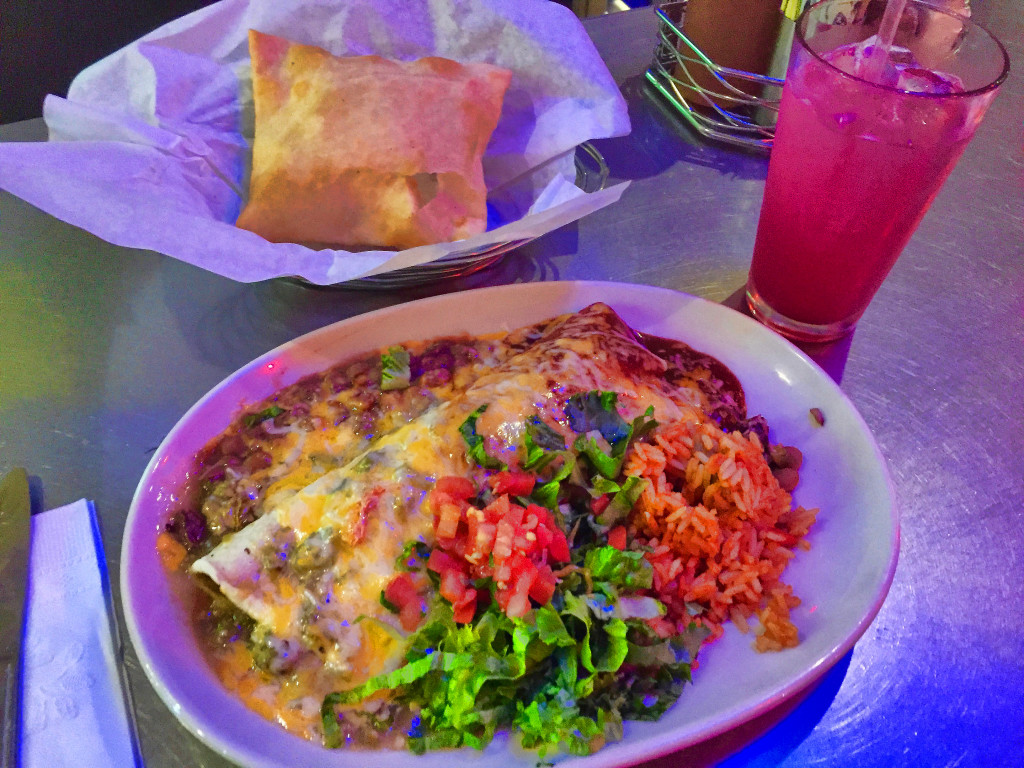
Burrito, “Christmas Style” with green and red chiles, Prickly Pear Lemonade at the Plaza Cafe, Sante Fe, NM – Taken by Diann Corbett
Three Cultures of Sante Fe
Sante Fe is an interesting and amicable blend of three cultures – Spanish/Mexican, Native American and Anglo. Santa Fe means “holy faith” and it is the oldest state capital in the country. Since New Mexico changed hands several times before its statehood in 1912, many of the original adobe buildings were there since the territory belonged to the Spanish. Its architecture and food contribute a Spanish/Mexican influence. Native American influence can be seen in the art, pottery and jewelry for sale in the Indian market as well as the boutiques. Santa Fe offers an excellent supply of shops and boutiques in the pricier range.
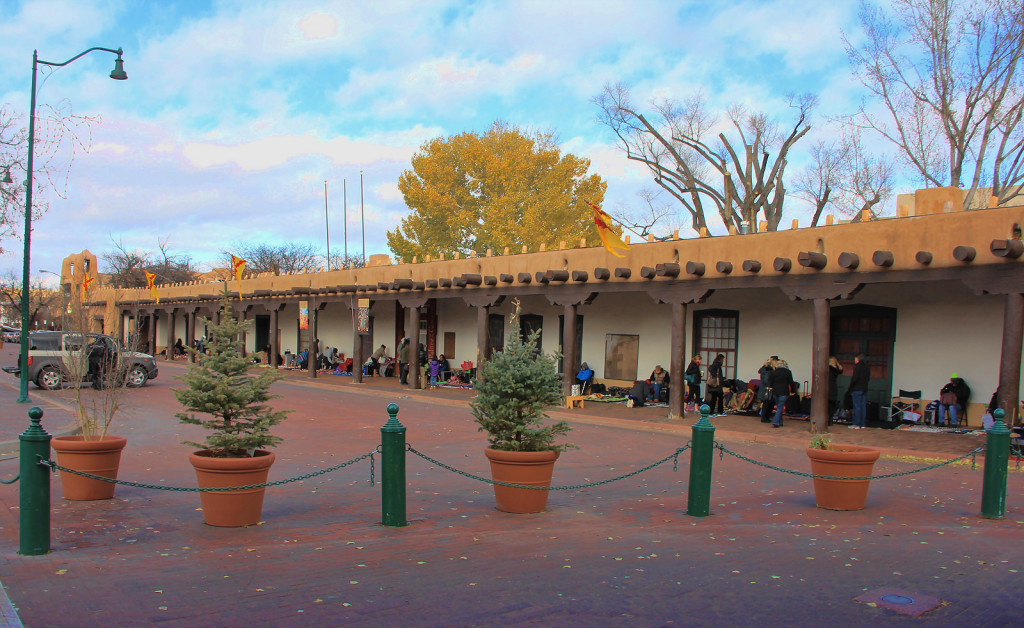
Indian Market at the Governors Palace, the oldest building in Sante Fe, NM – taken by Diann Corbett, 11/2015.
Sante Fe School of Cooking
Since Sante Fe is known for its food, a cooking class is a great activity to plan. The Sante Fe School of Cooking offers many classes, both demonstration and hands on. Demonstration classes involve watching an instructor and assistant prepare the meal, then sampling it afterward. The Instructor at the class I attended, Michelle Chavez, presented an interesting history of New Mexico chiles and explained the terroir factor of chile peppers. The meal included Green Chile, Chicken and Chico Soup, Steak Carnitas on a Gordito, Jalapeño Slaw, Roasted Corn on the Cob with Cilantro Lime Butter and New Mexico’s state cookie, the Biscochito. The meal was excellent and there is also an onsite store to buy books, ingredients and cooking accessories.
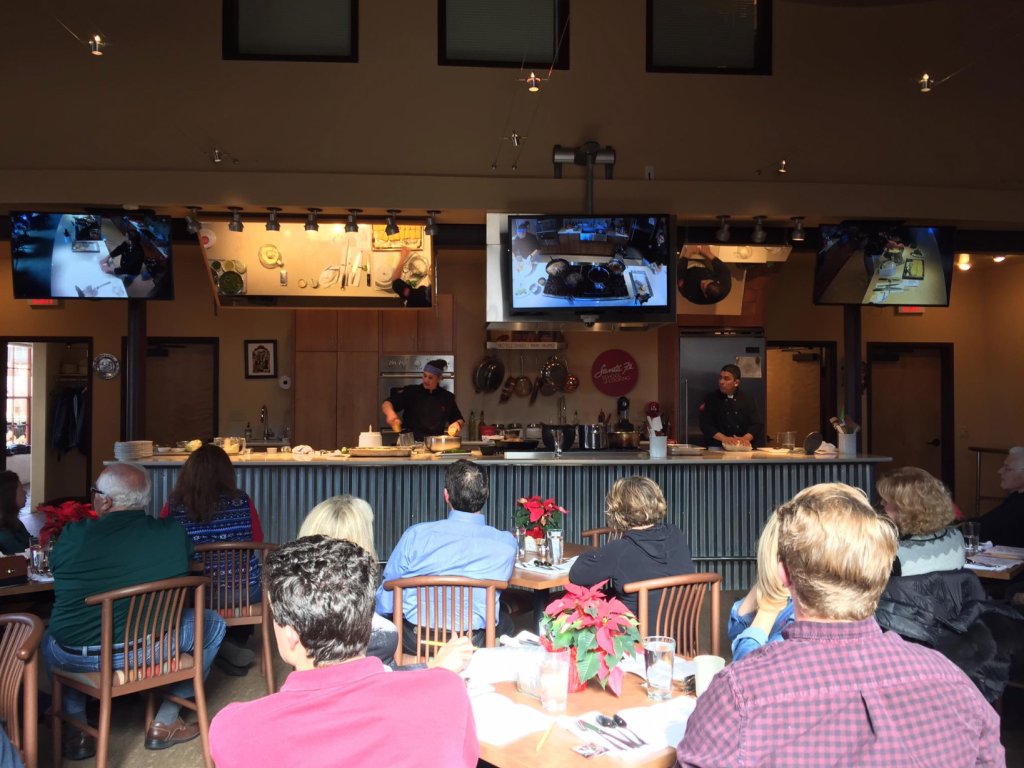
Michelle Chavez and Assistant Teaching a Class, Sante Fe School of Cooking, NM – taken by Diann Corbett, 11/2015.
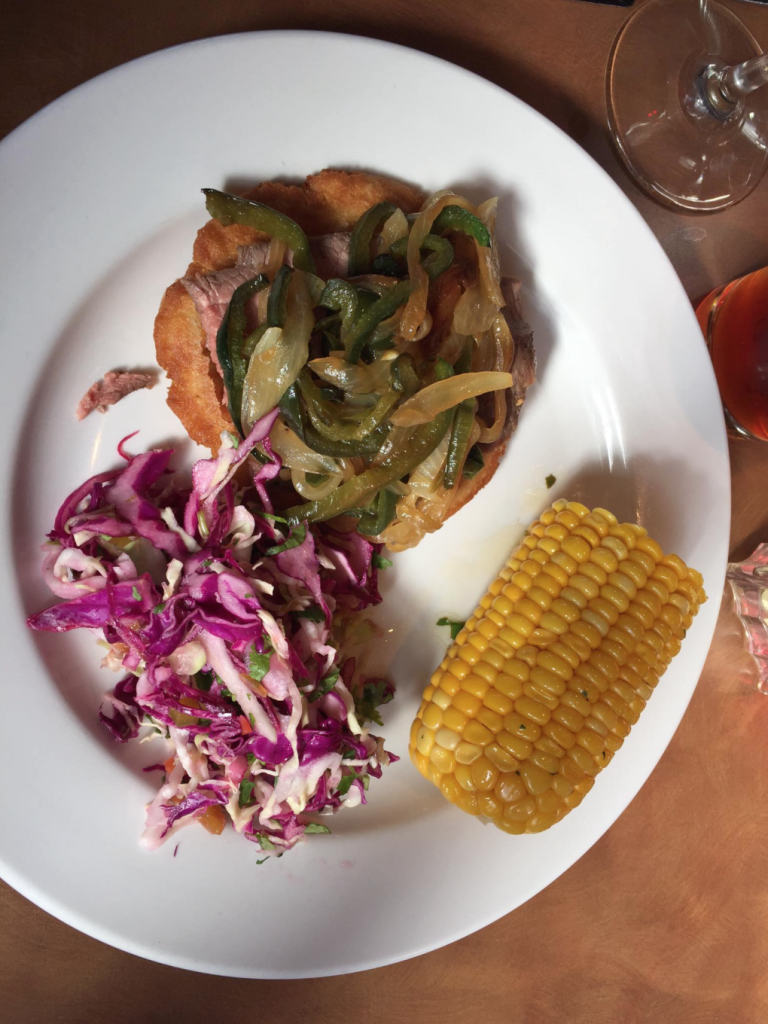
Steak Carnitas, Jalapeño Slaw & Roasted Corn on the Cob – Sante Fe Cooking School, taken by Diann Corbett, 11/2015.
Santa Fe Tours
There are several historic walks and ghost tours available in Sante Fe. I tried two – the The Original Ghost Tour by Peter Sinclaire, who has been doing this tour since 1993 and Historic Walks of Sante Fe which met at the Galleria on the Plaza. There are also self-led, trolly and van tours.
The Original Ghost Tour met at the St Francis Hotel and centered mostly on stories related to three of the major hotels in town – St Francis, La Fonda and La Posada. The infamous La Llorona story was told along the river as well. The tour lasted a couple of hours and told many stories from the region.
The Historic Walks of Sante Fe Tour was an excellent experience, but much like drinking from a firehouse. The leader presented a lot of detailed information about many eras of Sante Fe history, so much so that summarized, bulleted sections might have been nice to break up several hours of content. The walking was minimal, starting near the Plaza and ending at the Loretto Chapel. Our guide talked about the settling of Sante Fe, the road to statehood, the railroad, art & architecture, modern film & television in Sante Fe, the building of the cathedral and the mysterious spiral stairs of the Loretto Chapel. It definitely provided a excellent context to the town. Both tours are highly recommended.
Sante Fe Museums
There is an excellent collection of museums in Sante Fe – both walkable in town and on nearby Museum Hill. Visitors could spend a week just touring the museums. I sampled two art museums – the Georgia O’Keeffe Museum and the Museum of Contemporary Native Arts.
The Georgia O’Keeffe Museum is located just off the plaza, near the school of cooking. It is a small museum, with more collections located in the nearby New Mexico Museum of Art as well as the two O’Keeffe homes owned by the museum to the north. There is a short biography film on O’Keeffe and several of her works along with those of other artists. Her story is one of several which illustrate that independent, artistic women love Sante Fe.
The Museum of Contemporary Native Arts is located across from the cathedral in a beautiful adobe building. It has several exhibits involving photography, painting and mixed media. There is also an on-site store. Many exhibits incorporate traditional native life in the back drop of modern existence.
Overall, Sante Fe is known for adobe architecture, high desert & mountainous landscape, spicy chile pepper cuisine, and Southwestern art full of Spanish, Mexican and Native American influences. It is a perfect weekend destination, accessible through the Albuquerque airport (ABQ), or the trip can be extended to include nearby Taos.

